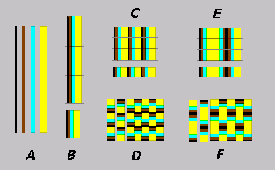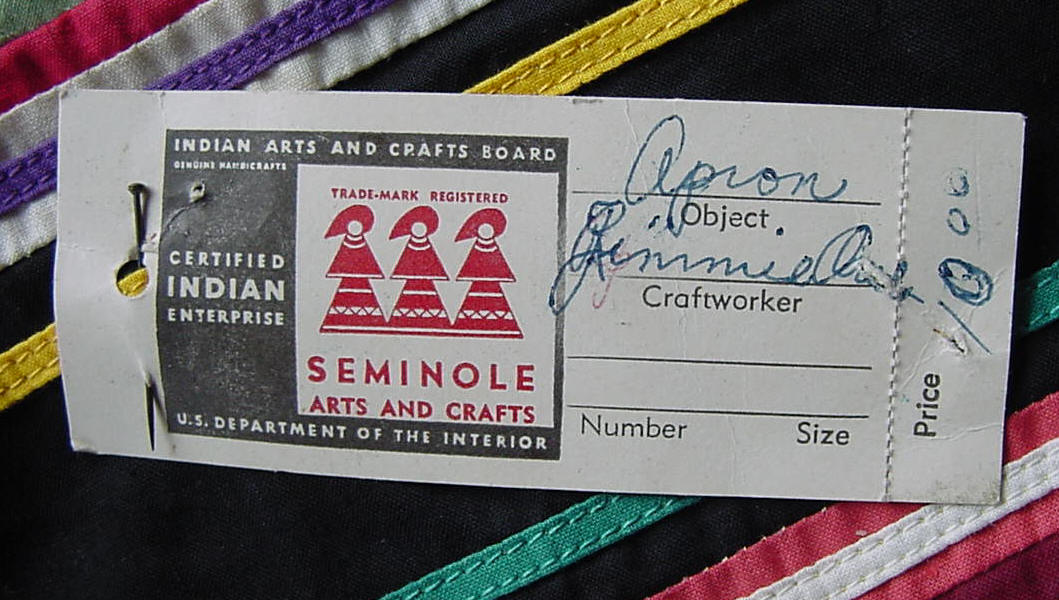|
|
|
|
Seminole Patchwork
Click on the above pictures to see them in detail. See the illustration below to see how they are made.
 |
Seminole Patchwork is quite remarkable and resourceful. It recycles scraps of cloth into beautiful, eye-popping fabrics by recombining strips of cloth or ribbon. Almost every strip of fabric is salvageable even those 1/2 inch wide.
A - Sew long narrow strips of fabric or ribbon together lengthwise.
B - Cut the strips into the length desired, as indicated by the grey lines.
C - Sew the lengths together, side by side, to create a square or rectangle of fabric. Then, cut the rectangle into strips as indicated by the grey lines.
D - The strips are then resewn together, side by side, with every other strip being rotated 180º.
E - Strips, cut from B, are sewn together, side by side, with every other strip being rotated 180º.
F - Strips, cut from E, are sewn together, side by side, with every other strip being rotated 180º.
This patchwork industry was supported by the Indian Arts and Crafts Board run by the Department of the Interior which set up roadside areas where sales to tourists were brisk. The buildings which housed the DI supplied sewing machines were ramadas or shade roofs, built of poles and thatching materials. The patchwork was sold with certificates of authenticity which gave the maker's name and assured that the work was original. This kept the price of the certified work higher than it otherwise would have been in a market flooded with unidentified knockoffs.
 |